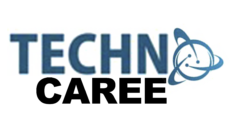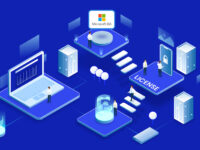Key Features of GRC Software That Transform Business Operations
In the intricate web of modern business environments, Governance, Risk, and Compliance (GRC) software stands as a pivotal technology, harmonizing complex processes and ensuring that enterprises not only meet their regulatory requirements but also perform optimally. Here’s a deep dive into the key features of GRC software that significantly transform business operations, driving efficiency and strategic insight.
Centralized Data Management
One of the standout features of GRC software is its ability to consolidate data across various departments into a single, unified system.
Unified Information Repository
This centralization negates the redundancies and discrepancies often found with dispersed data, providing a holistic view of the enterprise’s operational health. It fosters a cohesive strategy for governance, risk management, and compliance, ensuring that all decisions are informed by the same set of accurate, up-to-date data.
Enhanced Accessibility
Centralized data management also enhances accessibility, allowing stakeholders from various parts of the organization to access necessary information quickly and efficiently, thus speeding up decision-making processes.
Real-Time Monitoring and Analytics
Keeping a pulse on operations and risk in real-time is crucial for maintaining agility in today’s fast-paced market environments.
Continuous Risk Assessment
GRC platforms offer tools that continuously monitor and analyse risks as they develop. This feature allows businesses to address vulnerabilities proactively, preventing them from escalating into more significant problems.
Predictive Analytics
Advanced analytics help predict future trends and potential risks by analysing historical data. This capability enables companies to be steps ahead, preparing strategic responses to likely changes and challenges.
Automated Compliance Management
Navigating the ever-changing landscape of compliance can be daunting. GRC software simplifies this with automation features that are indispensable for modern businesses.
Regulatory Change Management
Automated updates about regulatory changes ensure that businesses stay compliant without manual intervention. This feature is crucial for companies operating in heavily regulated industries like finance and healthcare.
Audit Trail and Reporting
Efficient audit trails and automated reporting reduce the time and labour typically associated with compliance activities. They also improve accuracy and transparency, making it easier to demonstrate compliance during audits.
Enhanced Collaboration and Communication
Facilitating effective communication and collaboration across departments can significantly boost efficiency and compliance.
Role-Based Access and Controls
GRC software typically includes role-based access controls that ensure sensitive information is only accessible to authorized personnel, thus maintaining security and data integrity.
Shared Dashboards and Alerts
Customizable dashboards provide relevant, real-time data to different stakeholders, enhancing strategic alignment across departments. Alerts can be set up to notify the concerned personnel about critical issues or needed actions, ensuring swift response rates.
Scalability and Flexibility
As businesses grow, their GRC needs may evolve. Top-tier GRC software is designed to scale and adapt along with the organization.
Modular Deployment
Many GRC platforms offer modular setups, allowing companies to select and integrate features that meet their specific needs, whether they’re looking to expand their functionalities or streamline existing ones.
Customization
The ability to customize processes, workflows, and interfaces ensures that the GRC software can adapt to the unique operational structures and needs of a business, contributing to better governance, risk management, and compliance strategies tailored specifically for each enterprise.
Conclusion
The integration of GRC software is transforming how businesses operate and strategize. These systems not only manage risk and compliance more effectively but also enhance decision-making processes, operational efficiencies, and strategic adaptability. By leveraging these key features, businesses are better equipped to navigate the complexities of contemporary markets, ensuring both compliance and competitiveness in a rapidly evolving business landscape.







